Pentax MZ-5 / ZX-5 35mm Film Camera Review
A word of caution. This is one of the more advanced film cameras that I use. I'm much more of a classic film camera kind of person. All mechanical and all. I have to inform you of this to set expectations. Your expectations and mine. I don't know much about your expectations but my expectations from an electric perspective are low. If takes picture, me happy.
Pentax MZ-5 was launched in the electronically plastic camera era of the 1990s. In some markets ( like the US ) the MZ line was not known as MZ line and instead was called ZX. I'm sure that there was a reason for it. That reason is a mystery to me though. Because of that, in some parts of the world Pentax MZ-5 is Pentax MZ-5. In other parts of the world it's the Pentax ZX-5.
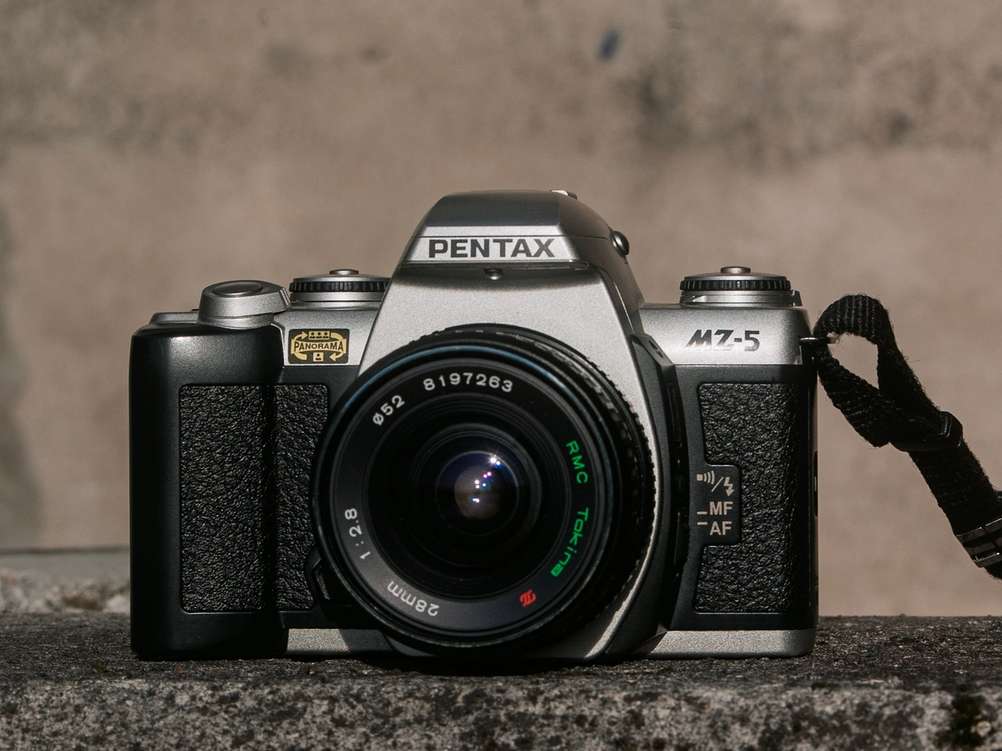
This is the Pentax MZ-5. OR ZX-5 although mine doesn't say that. It looks like a mix between old and new. You can't even tell that it's made from plastic by looking at the photo.
The grip looks slightly out of place but it does help with holding the camera.
The MZ line is quite special to me. The Pentax MZ-7 was the first SLR camera I bought. It was many, many years ago. At the time it wasn't even that old of a camera. I didn't buy it new but still. Could not have been more than 10 years old or so. It was the first camera I experienced what a real bokeh is. It's also a camera that started my relationship with Pentax that continues to this day.
I don't remember when I got the MZ-5 but it is a more recent purchase. I remember trying to buy something similar to the MZ-7 which I had sold by that point. MZ-5 was something that was available at the time so I jumped on it. With my current mindset the MZ-5 is a more appropriate camera to me than the MZ-7 would be.
The MZ line of cameras has several models in it and they are not all just minor tweaks of one another. MZ-5 stands out because it has a more "classic" set of controls than other cameras in the series ( like MZ-7 ). Other cameras would have a control set that is used more in today's dSLR cameras. Like a mode dial. Some buttons here and there. And a LCD to display various bits of information. MZ-5 retains a LCD ( although smaller and more basic ) but instead of buttons and a mode dial it has a real exposure time dial and a real exposure compensation dial. This layout is more familiar to someone who uses older, mechanical cameras. It's also something I prefer.
Build Quality
I can't say that the MZ-5 is an exquisite marvel of engineering with a splendid build quality. What I can say is that it's a camera built with surprisingly not the most terrible feeling plastic. I am not a man of plastic. I try to avoid it in my everyday life. Especially in cameras. Plastic cameras can feel cheap in the hand. Light, hollow, creaky and overall not something that is a joy to hold. The MZ-5 is not that bad.
The plastic used feels solid. The way the camera is fit together also seems solid and it doesn't twist and creak as you squeeze it. I don't squeeze my cameras often, but when I do, I expect not a single peep.
The weight is also not too light. It's not a heavy camera but it doesn't feel like a hollow shell. I don't know how much of the camera isn't made of plastic but at least the lens mount is metal. As is the hot shoe.
Controls are also decent. They don't tingle my spine when I use them but they are OK. Both the shutter speed and exposure compensation dials have a decent click that is not very exciting but it doesn't offend. The only other control that is used more often than never is the on/off switch. It's also OK. There are a few other controls but they never get used so I don't have an opinion about them.
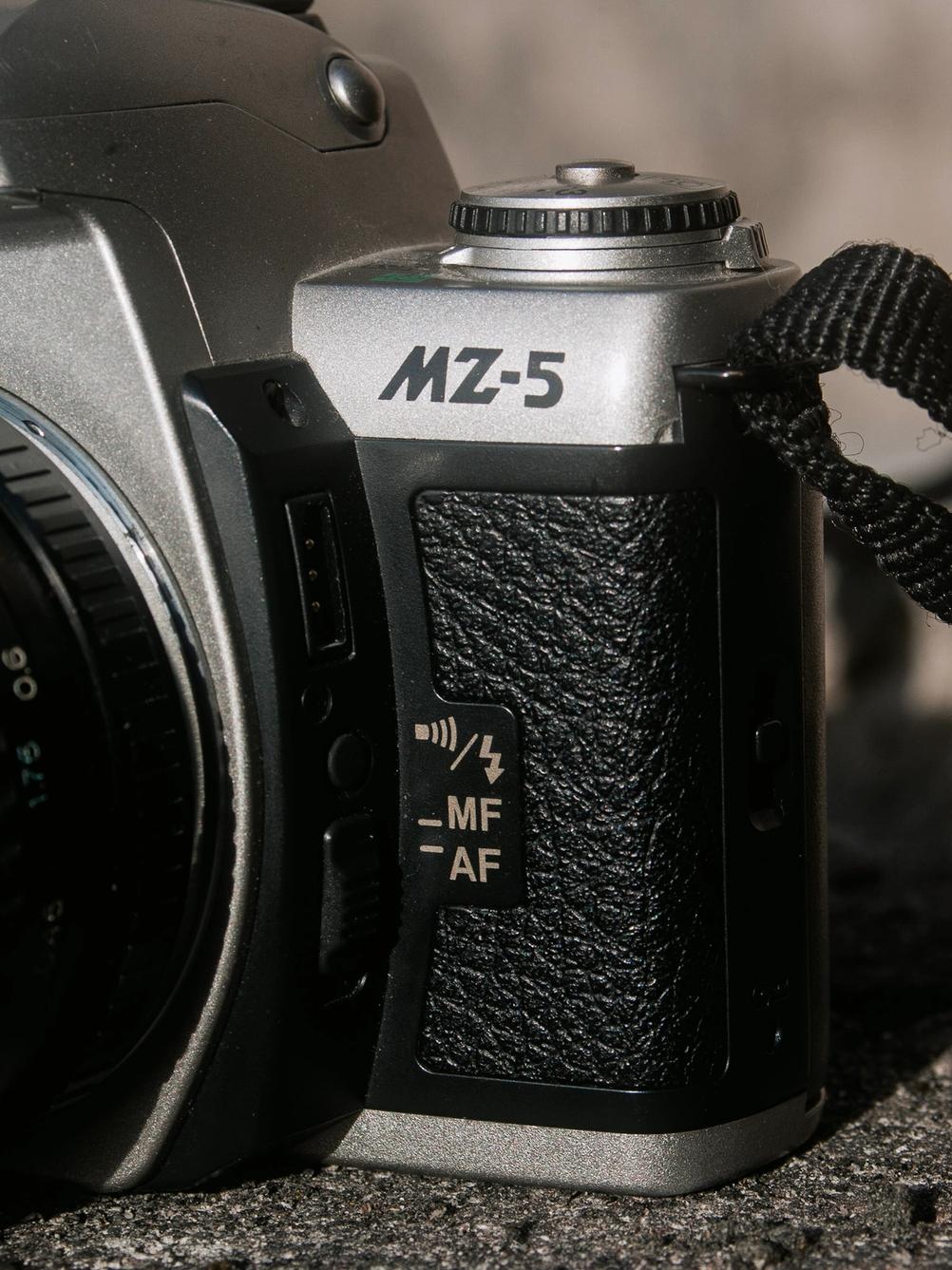
There are a few controls on the side of the lens mount but they never get used. AF / MF always stays at MF position. And you can turn off the sounds camera makes with the other button.
There is also some attachment port but I'm not sure what accessories you can attach there.
MZ-5 is not a camera that someone will experience orgasms with but it also won't cause rage.
Functionality
As it's a more modern camera, there is a fair bit of what it can do for you.
Viewfinder
Let's start with a function that is a downgrade when compared to most older SLR cameras. MZ-5 suffers from an illness known as aSLRs-90. An autofocus SLR disease. Because the camera is built in a world where lenses and cameras focus automatically, the viewfinder is not optimised for manual focus. It's not very big or bright. And it doesn't have any optical or mechanical assists to help you when you want to be an old man and focus by hand. It's just a glass screen. It's difficult to tell when something is truly in focus on such a screen. MZ-5 is not unique with this issue. Most SLRs built when autofocus lenses were common have this issue. And pretty much all dSLRs have this issue.
The only saving grace is that it has focus confirmation that works for all lenses. The camera will show a diamond in the viewfinder and also make a "beep" sound ( if not turned off ) when what is in the center of the frame is in focus. Definitely an essential function for a camera such as this. It works fine most of the time but I have had it saying that it's in focus but the final image is out of focus.
Other than that, the viewfinder displays some useful information. Like how well exposed you are and what the shutter speed and aperture are. Aperture will only be visible if the lens can pass that information to the camera.
Autofocus
This will be a short section. I have no idea how well the autofocus works on this camera. I have never used it. If I had to guess I would say that the autofocus is OK for everyday photos but don't expect it to be the best action sports camera. The autofocus system works well enough for me as a focus confirmation device. It gets things right 90 - 95% of the time.
Metering
This is the main reason why I use this camera. The metering is accurate and the camera supports a wide range of ISOs. I trust it with slide film and I trust it when I can't be bothered to meter using my eyeballs. The metering hasn't failed me and I expect no more of it.
Camera supports film DX code reading but you're not forced to use that reading. It will set the ISO based on DX code but you are free to override it and it will remember your choice. That's very good as quite a few other cameras, especially in the compact camera world, don't allow that. The selection of ISOs is also vast and should cover all your needs. It can go as low as ISO 6 and as high as ISO 6400.
From the control perspective everything makes sense. Throw the exposure time dial in "A" mode and the camera will work in aperture priority mode. This is what I use the most and it works like I expect it to. If your lens has an "A" mode as well, then you can set it to that and the camera will go full auto. You can also leave the aperture in "A" and manually set exposure time giving you shutter priority. You can also change everything manually. I keep the camera in aperture priority mode 95% of the time as that is why I take the camera out in the first place.

Pentax MZ-5 supports shutter speeds from 2s to 1/2000 of a second. A pretty good range.
Having access to exposure compensation is useful for tricky light scenarios or if you want to do something custom where the meter could misunderstand your desires. You can go up to 3 stops in each direction with half step increments. This can come in handy because of the one flaw this camera has in the metering department. MZ-5 can't lock exposure reading. In an ideal world the camera would lock the exposure reading on half shutter button press. Or at least have a dedicated button to do that. But it doesn't. Such a feature would allow you to meter for something and then recompose and keep the reading. Instead you have to take a reading and then either lock the reading using manual mode or use compensation to achieve the same effect. This is my one most wanted feature in this camera.

This is the exposure compensation dial that also allows to set the ISO in combination with the "Spot AF" button.
You can also set the metering mode here. I usually stick with the widest metering range. If the camera had the ability to lock focus, a spot-meter-like metering would be used more often.
Pentax did release Pentax MZ-5N ( and ZX-5N ) which does add exposure lock functionality. I might get it one day.
Other Things
MZ-5 can do some other things but they are not substantial enough ( at least for me ) to warrant their own heading. Here are some other aspects in no particular order.
The camera has a panorama mode where it crops the normal 35mm frame giving it a more panoramic aspect ratio. I like panoramic aspect ratios but I don't like to get them by cropping a normal 35mm frame. That's why I use this feature rarely. It works fine but quite a few cameras from this time period had this feature. Panorama mode is toggled by a lever near the viewfinder. Enabling this mode will not only put blinds for the film gate but also for the viewfinder. It's glorious to compose in panoramic aspect ratio but it's a shame that the final image size is a crop.
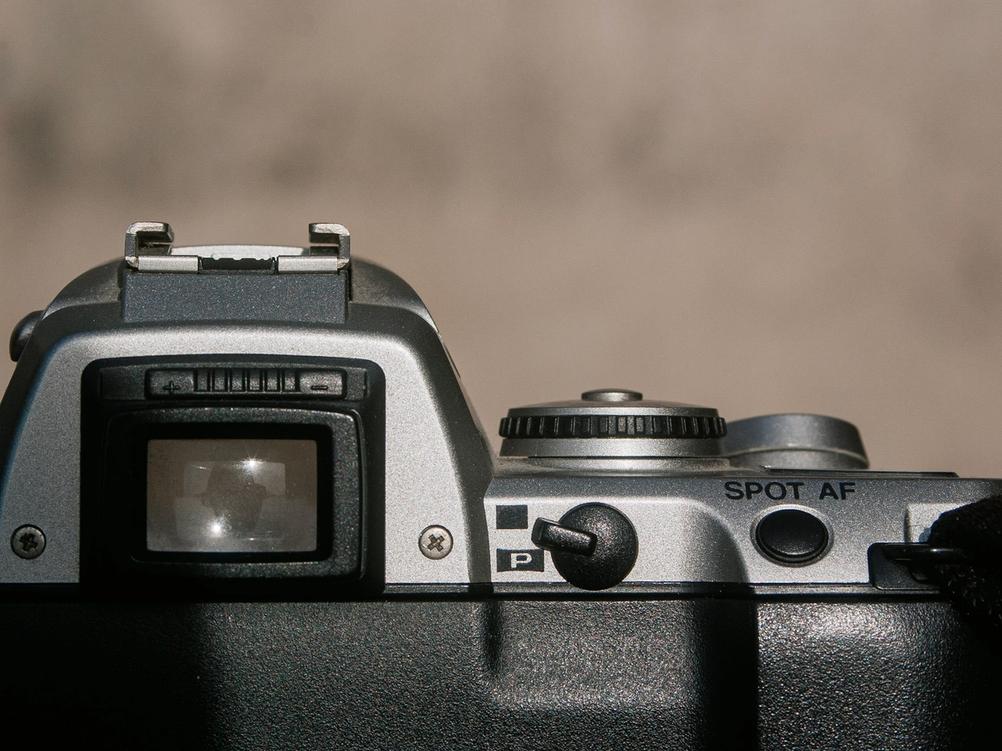
It's very easy to flick between normal and panoramic modes. If only the final size on negative would actually be wider as the image suggests.
MZ-5 will wind and rewind the film for you. It works well enough but I prefer manual winding as it gives me more pleasure. Automatic winding does give you the ability to burst shot. You can achieve around 2 frames per second. Useful for when you want to finish a 36 frame roll in just under 20 seconds.
It also has a popup flash.
Usability
With all the facts listed — how is it to actually use the camera? It's fine. It allows you to not focus on metering and focus more on composition and other things. A better viewfinder would help there. So would an autofocus lens unless your religion forbids such atrocities. I know mine does.
The camera feels OK in the hands. Because of the more automatic nature, you don't have to care about controls much. The controls that have to be used from time to time are easy to use. Only the ISO setting is a bit weird. ISO setting happens through the exposure compensation dial. You turn it to ISO mode and then use the LCD and "Spot AF" button to cycle through all ISO values to finally pick the right one. It's a bit tedious but it's not something you have to do often. You might never have to do it as the camera will read the appropriate ISO from the film canister if possible.
The only other gripe is with the on/off switch. In the off position it sits too close to the exposure time dial so it is difficult to switch the camera on again. You either have to jam your finger between the switch and exposure time dial. Or you have to use two fingers. Not ideal. Turning the camera off is easy though.
To drive all this electronic functionality the camera requires you to insert 2 CR2 batteries deep within its belly. They are not the most available or affordable batteries out there but you can still get them easily enough. They also last plenty of time in this camera.

Film chamber looks more high-tech than on older mechanical film cameras. Loading is trivial. Load the canister and stretch the film leader to the position indicated by the film icon. Close the back of the camera and the camera will handle the rest.
Results
There isn't much you can tell about a film camera by looking at the pictures it took. Most of the soul comes from the lens and film used. Still — you can see how the camera meters. And what would be a camera review without some photos.

- Camera
- Pentax MZ-5
- Lens
- Pentax SMC M 50mm f1.7
- Film
- Kodak Ektachrome EPP100 EI80
I trust the camera to make very good metering choices - even with slide film.

- Lens
- Pentax SMC M 50mm f1.7
- Film
- Kodak Ektachrome EPP100 EI80
But the metering isn't perfect and can get confused.

- Camera
- Pentax MZ-5
- Lens
- Pentax SMC M 50mm f1.7
- Film
- Fujifilm C200 EI200
- Development
- Tetenal Colortec C-41
- Scanner
- Reflecta ProScan 10T
Everybody loves panoramic aspect ratio. Everybody also wants to expose that aspect ratio on a larger piece of film.

- Camera
- Pentax MZ-5
- Lens
- Pentax SMC M 50mm f1.7
- Film
- Kodak Ektachrome EPP100 EI80
My favourite is definitely to use this camera with some slide film.

- Camera
- Pentax MZ-5
- Lens
- Sun Auto Zoom 85-210mm f4.5
- Film
- Kodak Gold 200 EI200
- Development
- Tetenal Colortec C-41
- Scanner
- Reflecta ProScan 10T
It's difficult to achieve perfect focus with the viewfinder of MZ-5. Especially when dealing with a narrower depth of field and not as sharp of a lens.
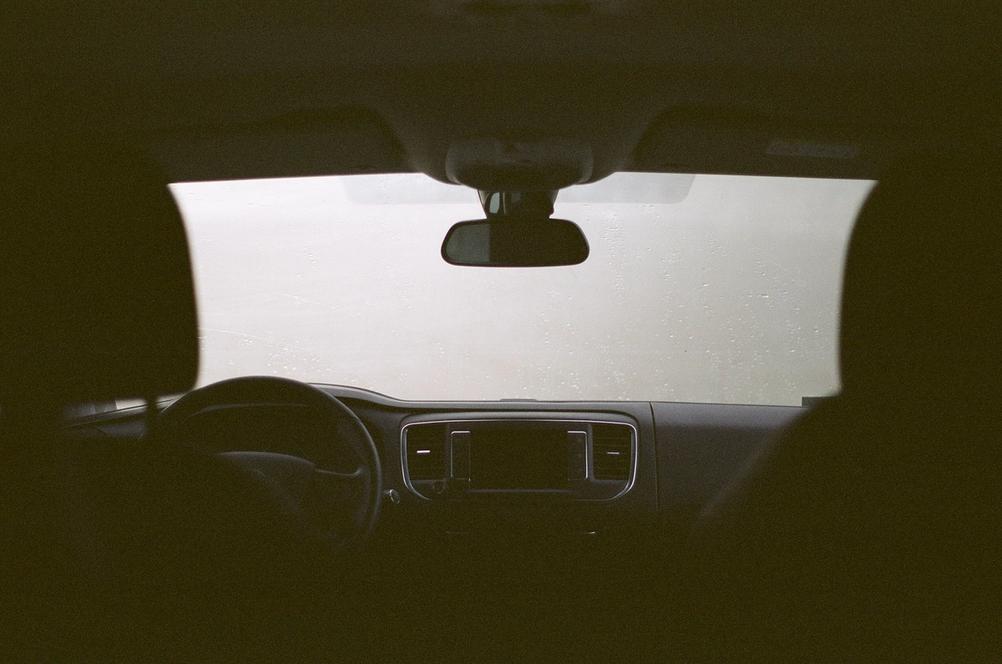
- Camera
- Pentax MZ-5
- Lens
- Pentax SMC M 50mm f1.7
- Film
- Fujifilm Reala EI100
I have to, once again, praise the metering on MZ-5. It rarely fails you.

- Camera
- Pentax MZ-5
- Lens
- Pentax SMC M 50mm f1.7
- Film
- Fujifilm Reala EI100
MZ-5 is not an exciting camera but it wont' stop you from creating some nice images.

- Camera
- Pentax MZ-5
- Lens
- Pentax SMC M 50mm f1.7
- Film
- Fujifilm Reala EI100
There is no need for autofocus even when you're taking photos of things moving. Albeit moving slowly.
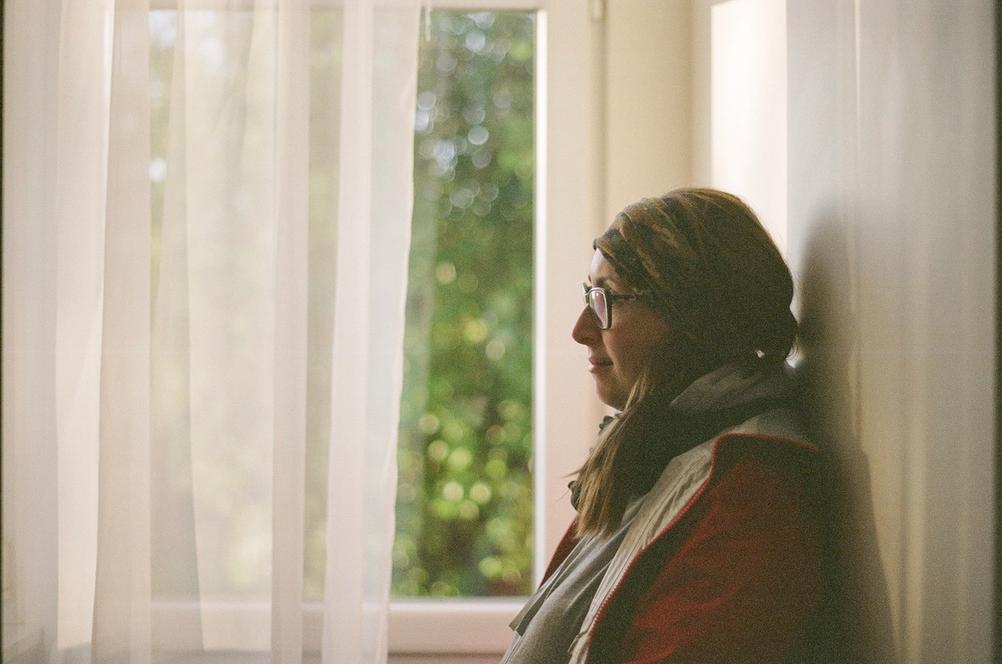
- Camera
- Pentax MZ-5
- Lens
- Pentax SMC M 50mm f1.7
- Film
- Fujifilm Reala EI100
And like I've already, probably, said — it meters fine.
Final Thoughts
Pentax MZ-5 is a fine camera when one doesn't expect mechanical greatness and instead wants to rely on some automation. I'm sure that there are better cameras that would fit the bill but I like Pentax and so should you. It's very affordable. It supports all K-mount lenses and there are loads of great K-mount lenses. You can even stick a M42 adapter on it and get access to even more lenses.
Typical prices for this camera are around $40 - $70 although it's not uncommon to find it for a lot cheaper. If you're in need of some automation and have a few K-mount lenses around I would say that there are worse things you can spend that money on.
